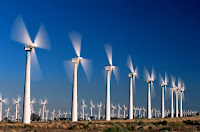The result was explained last year in a Bloomberg Business piece aptly headlined, “Germany Proves Life With Less Fossil Fuel Getting Easier”: “Germany experiences just 15 minutes a year of outages, compared with 68 minutes in France and more than four hours in Poland.”
Germany is the most powerful economy on the planet to depend so much on renewable electricity — renewables currently deliver 28 percent of Germany’s total grid power (and up to 40 percent in some regions). The United States has a very long way to go to hit that level, by which time there will be an even wider range of cost-effective strategies to deal with much higher levels of renewables.
Part One of this series explained why the International Energy Agency now projects that, for the planet as a whole, “Driven by continued policy support, renewables account for half of additional global generation, overtaking coal around 2030 to become the largest power source.” Part Two explained why renewables are going to grow so quickly in this country over the next couple of decades, especially wind and solar power, at the expense of both coal and natural gas.
In this post I’ll discuss why it is turning out to be less challenging than expected to incorporate more and more renewables into the electric grid — and to handle periods of time when demand is high but the wind isn’t blowing and/or the sun isn’t shining. As the lead energy specialist at the World Bank, Morgan Bazilian, told Bloomberg after 20 years studying this issue, “Very high levels of variable renewable energy can be accommodated both technically and at low cost.”
One very basic strategy is an improved electricity transmission system. After all, “the sun is shining or winds are blowing somewhere across the United States all of the time,” as NOAA explained in a news release for a new analysis. Researchers concluded that “with improvements in transmission infrastructure, weather-driven renewable resources could supply most of the nation’s electricity at costs similar to today’s.” According to Alexander MacDonald, co-lead author and recently retired director of NOAA’s Earth System Research Laboratory, “Our research shows a transition to a reliable, low-carbon, electrical generation and transmission system can be accomplished with commercially available technology and within 15 years.”
Quite separate from improving transmission, there are two primary ways the intermittency challenge posed by solar and wind power is being addressed today. First, half or more of the “intermittency problem” is really a “predictability problem.” If we could predict with high accuracy wind availability and solar availability 24 to 36 hours in advance at a regional level, then electricity operators have many strategies available to them. For instance, operators could plan to bring online a backup plant that otherwise needs several hours to warm up.
An even cheaper way to fill the gap from clouds or a lull in winds is to use “demand response,” which involves paying commercial, industrial, and even residential customers to reduce electricity demand given a certain amount of advance warning. As noted in Part Two, the recent Supreme Court decision in favor of demand response puts efficiency and demand reduction on a level playing field with generation, which means we’re going to see a lot more of both in the coming years, since they are the biggest and cheapest “new” sources of electricity by far.
The Court’s 6-2 decision means “consumers will now have an opportunity to receive more value from the new energy technology they put into their homes and businesses,” as former Federal Energy Regulatory Commission Chair Jon Wellinghoff explained. It “will also mean the expansion of more clean distributed resources.” Here’s why:
This is because a smart thermostat not only will lower your bills by more precisely controlling the amount of heating or cooling energy you use; it will also provide you revenue by being able to participate in demand response programs in the wholesale energy markets. This also applies to all other controls for appliances in the home, to solar PV systems on the roof, to batteries and even plug-in electric vehicles.Now, utilities don’t have to buy a bunch of expensive, dirty fossil-fuel fired power plants that run only a short period of time each year during peak demand (or, say, when it is unexpectedly cloudy or windless) — at a very high cost per kilowatt-hour. They can simply bid for demand response resources, which are much cheaper (and, of course, generate no pollution). Wellinghoff notes, “And it applies not only to consumers in their homes, but businesses too. Large commercial and industrial (C&I) customers with the ability to bid demand response into the wholesale market are now assured the ability to do so, which will benefit the C&I customer and the system as a whole.”
A key point, though, is that new technology is increasingly making it less and less likely for there to be an unexpectedly cloudy or windless day. As a 2014 article on “Smart Wind and Solar Power” in Technology Review put it, “Big data and artificial intelligence are producing ultra-accurate forecasts that will make it feasible to integrate much more renewable energy into the grid.”
Read more at Why The Renewables Revolution Is Now Unstoppable

No comments:
Post a Comment